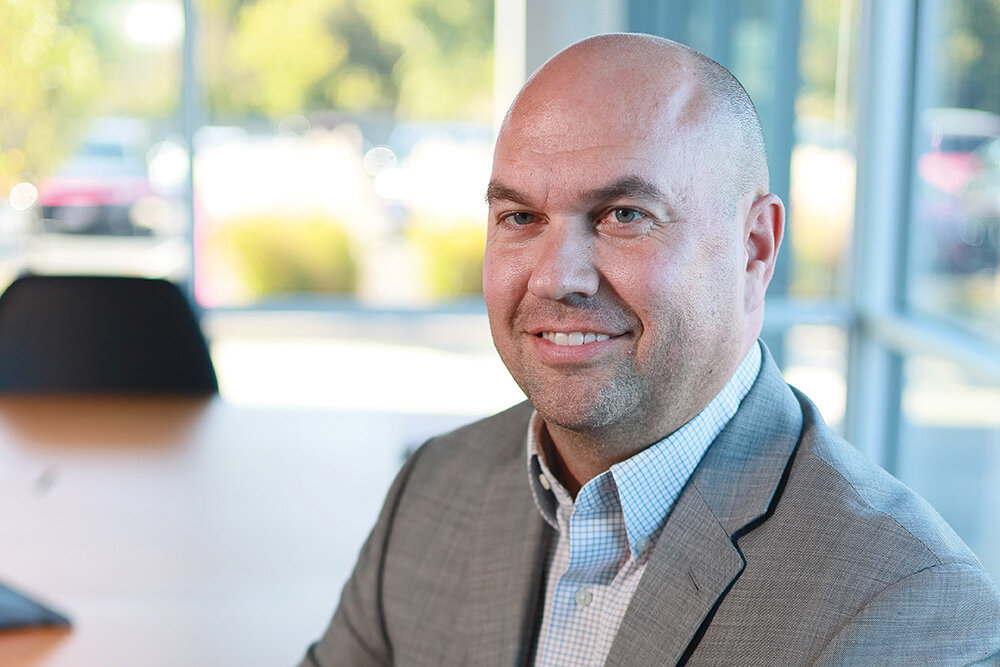YOUR BUSINESS AUTHORITY
Springfield, MO
YOUR BUSINESS AUTHORITY
Springfield, MO

Your new position as Springfield market president for Legacy Bank was announced in August. Is that a new position within Legacy? Tell me how that came about.
That is a new position. I have been with Legacy Bank for almost six years now. I’ve previously served in the capacity as a senior vice president and our senior lending officer. This was just an opportunity, I think, to step up and take on more of a leadership role in the Springfield market that we just haven’t really had.
Looking at Legacy’s deposit market share in the area the past couple of years, you have more than doubled. Now, you’re the sixth largest bank locally with $1 billion in deposits and 6.5% of the Springfield market share. What are some of the strategies that have been behind that growth?
We made a pretty large investment in the Springfield market over the past few years, not only in resources in a bank building but also just in staffing. We’ve brought on a lot of really good people over the last four or five years that has led to a lot of that growth. A lot of our growth has been in our commercial portfolio. We are also really active in affordable housing financing, and we have seen tremendous growth in that sector as well.
On the commercial side, if you look at a national picture, a study from the Federal Reserve Bank of Kansas City on commercial and industrial lending in the second quarter found that declined almost 17% compared with the same quarter last year. That continued the decline from the first quarter. It sounds like you are seeing a different picture, but are there challenges within that space?
There’s still some headwinds in the economy right now. Ultimately, inflation remains the most menacing issue right now. Funding costs have been on the rise over the last year or so as the Feds have been combating inflation by raising interest rates. Inflation, I think, has proven to be a little stickier than anticipated. Despite the interest rate increases, core inflation is still running at about twice the Fed’s targets. While pressures to continue increasing rates seem to have eased in recent months, it’s probably not likely that we’re going to see much relief from those higher interest rates in the near term. So, that’s certainly impacting lending activity and economic activity in general. We’ve had some pretty tremendous growth over the last couple of years but I think that has moderated for us recently.
As far as an outlook for the following year, what are the opportunities for growth?
I think there’s going to be opportunity for growth but it will be muted from historical levels. The Fed’s intention, I think, through all of this was to slow economic activity through increases in funding costs. I would say that that has been somewhat effective. We’re still seeing financing requests, but not at the same level as we saw in years past. The rise in interest rates has certainly posed some hurdles for new projects, higher funding costs. Projects are seeing reduced profitability and some cash flow constraints. So many projects are requiring a little more cash down on the front end to achieve the desired profitability that a lot of times the borrowers and banks are looking for.
Do you think there’s still concern of an economic downturn in particular markets?
There’s still some general concern in the economy right now. Probably a little bit of fear of the unknown. A little bit of a slowdown probably isn’t the worst thing. It tends to provide for a period of adjustment and reflection for companies and allows opportunities for people to reallocate resources and reduce some inefficiencies and hopefully lay a groundwork for a more balanced economy moving forward. If people are hitting the pause button on some projects right now, that’s probably not the worst thing. Springfield is a really strong market. We remain hopeful that we avoid a recession and achieve that soft landing that the Feds have been targeting.
A Deloitte 2024 banking outlook talked about how last year, rising interest rates helped banks grow income but it’s also increasing funding costs and impacting margins. It talked about deposit costs increasing 2.5% for regional and midsize banks in the second quarter. What are those implications at a bank like Legacy?
In a lot of cases, a rising interest rate environment can actually squeeze margins for commercial banks, just because deposits typically re-price a little faster than the loan portfolio does. I think from that standpoint, at least, it’s probably caused a little bit of margin compression.
Moseley’s Discount Office Products was purchased; Side Chick opened in Branson; and the Springfield franchise store of NoBaked Cookie Dough changed ownership.